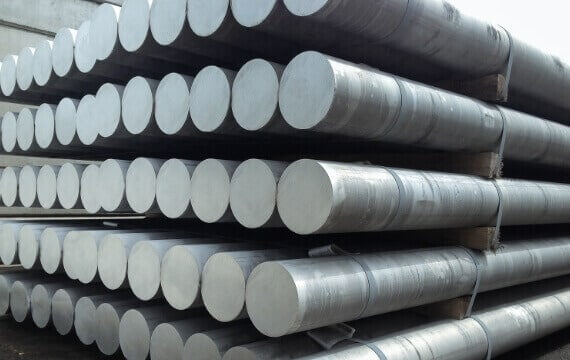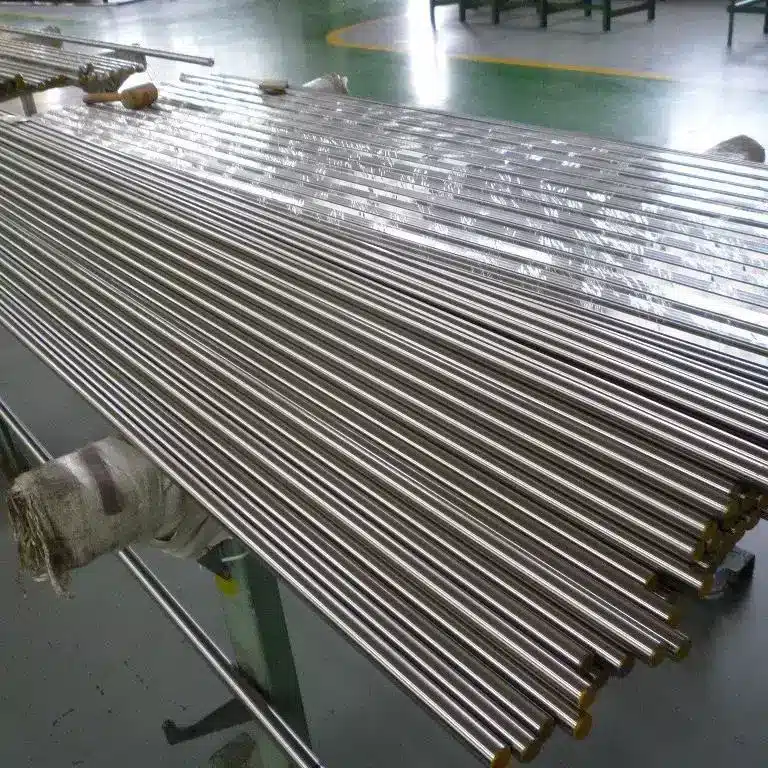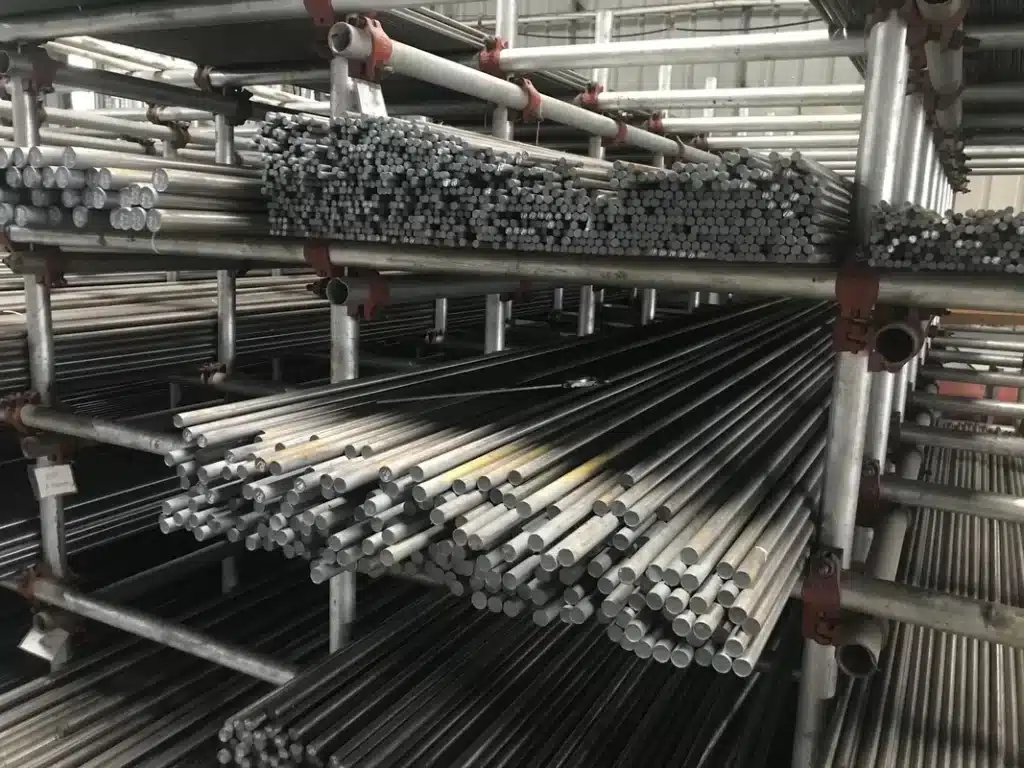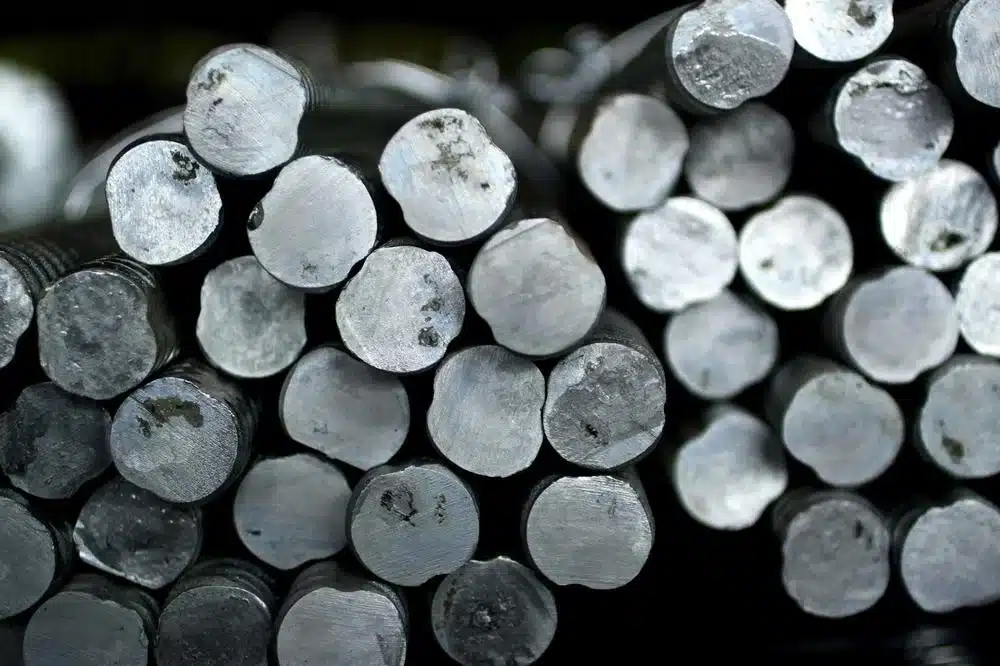Micro alloyed steels represent a class of materials engineered to achieve high strength and superior properties through the addition of small quantities of alloying elements. Predominantly used in automotive, construction, and industrial applications, these steels offer a cost-effective way to enhance performance without compromising on ductility or toughness. This comprehensive guide delves into the world of micro alloyed steels, elucidating their composition, benefits, manufacturing processes, and application-specific considerations.
What Is micro Alloy Steel?
Micro alloy steel is a type of carbon steel that comes enriched with small quantities of alloying elements such as vanadium (V), niobium (Nb), or titanium (Ti). These elements are added in amounts typically less than 0.1% of the composition, and their principal function is to provide a fine dispersion of precipitates during the steel processing phases, notably during controlled rolling or heat treatment. This addition results in an excellent combination of strength, toughness, and weldability.
The term “micro” highlights the minimal use of additional materials—these are not macro-alloying elements which are used in greater quantities but rather finely tuned additions that make significant changes to the mechanical properties of the material without substantially altering its composition or requiring extensive alterations to standard production processes.
Through these precise modifications, micro alloyed steels achieve increased strength compared to plain carbon steels through mechanisms such as grain refinement and enhanced precipitation hardening. In essence, they bridge the gap between low-carbon mild steels and more costly alloy steels while providing superior properties over both traditional categories.

Properties of micro Alloy Steel
Micro alloy steels are a class of high-strength, low-alloy (HSLA) steels which achieve their properties through the addition of small amounts of alloying elements such as niobium, vanadium, and titanium along with controlled rolling processes. An insight into the specific properties of micro alloy steel reveals an array of characteristics that make them suitable for engineering applications where strength to weight ratios are critical.
| Property | Description |
|---|---|
| Enhanced Strength | Higher yield and tensile strengths compared to ordinary carbon steels. |
| Good Toughness | Despite the increased strength, retains good levels of toughness. |
| High Hardness | Offers greater resistance to wear and abrasion. |
| Fine-grained Microstructure | Results in improved mechanical properties and controlled shrinkage. |
| Weldability | Better than that of many other high-strength steel grades. |
| Precipitation Strengthening | Microalloying elements cause precipitation hardening enhancing strength. |
| Ductility | Maintains adequate elongation rates under stress. |
| Fatigue Resistance | Improved resistance to fatigue due to cyclical loading conditions. |
Coupled with these inherent qualities, micro alloy steels also exhibit a notable capacity for through-thickness hardening as well as an efficient response to heat treatment processes, culminating in a fine balance between ductility and strength which is often sought-after in steel products used for structural purposes.
The ability to achieve significant mechanical improvements without substantial increases in carbon content or use extensive heat treatments makes micro alloy steel stand out compared to conventional architectural carbon steels. Moreover, due to the small additions needed for desired effects on physical properties, the cost-benefit ratio remains highly favorable.
Pros of micro Alloy Steel
Micro alloy steels offer a distinct set of advantages which are particularly important in various industrial applications. These benefits include:
- Increased Strength: The addition of micro-alloying elements such as niobium, vanadium, and titanium leads to the formation of small carbides or carbonitrides in the steel. This precipitation hardening significantly enhances the yield strength and tensile strength of the steel without drastically increasing its weight.
- Improved Toughness: It exhibits superior toughness due to a fine-grained ferritic or pearlitic matrix that forms during controlled rolling processes. As a result, micro alloy steels can resist fractures and deformations when subjected to high stresses.
- Enhanced Weldability: Given their fine-grained structure and balanced chemical composition, micro alloy steels generally possess good weldability, reducing the likelihood of cracking or other weld defects.
- Greater Ductility: They maintain better ductility compared to other high-strength materials. This characteristic is very useful where components need to be plastically deformed during processing or service without breaking.
- Cost Efficiency: Since these steels obtain their strength from micro-alloying rather than through heat treatment, they can potentially provide cost savings in manufacturing processes that require less energy consumption.
- Environmental Adaptability: The steel’s strong resistance to wear and improved corrosion resistance make it suitable for use in environments that are subject to severe conditions.
Cons of micro Alloy Steel
Micro alloyed steels offer many advantages, but there are also some disadvantages to consider. These cons can influence material selection for specific applications, and it’s crucial for engineers and designers to be aware of these limitations.
- Higher Cost: Micro alloyed steels are generally more expensive than traditional carbon steels due to the additional alloying elements and specialized manufacturing processes, making them less cost-effective for projects with tight budgets.
- Weldability Challenges: While most micro alloy steels have good weldability, certain grades may present difficulties during welding. Specific chemical compositions can increase the risk of issues like cold cracking, requiring preheating or post-weld heat treatment to mitigate problems.
- Heat Treatment Sensitivity: Precise control of heat treatment processes is crucial for micro alloy steels. Improper heat treatment can negate the benefits of added microalloying elements like vanadium, niobium, and titanium, impacting the material’s properties.
- Toughness Reduction at Low Temperatures: Micro alloyed steels may exhibit reduced toughness values, especially in thicker sections or at low service temperatures. Complex precipitations within the material can hinder dislocation movements, leading to lower ductility and toughness.
- Limited Availability: Some specialized micro alloy steel grades may not be readily available in all markets or regions. This limited availability can result in longer lead times or the need to seek alternative materials for specific applications.

What Is micro Alloy Steel Used For?
Here’s an overview of the primary sectors where micro alloy steel is extensively used:
| Industry | Applications |
|---|---|
| Automotive | Suspension components, gears, axles, drive shafts |
| Construction | High-strength concrete reinforcements, structural beams |
| Energy | High-pressure gas cylinders, oil & gas drilling equipment |
| Rail | Rails, railway wheels |
| Shipbuilding | Hull construction which requires high strength materials |
| Heavy Machinery & Equipment | Crane booms, hydraulic arms for earthmoving equipment |
How Is micro Alloy Steel Made?
- Melting and Composition Control:
- The production process begins with the melting of iron in an electric arc furnace (EAF) or basic oxygen furnace (BOF).
- During this stage, carbon and other alloying elements, including microalloying elements like niobium (Nb), vanadium (V), and titanium (Ti), are added to achieve the desired steel composition.
- Casting:
- The molten steel with the desired composition is then cast into continuous casting machines to form semi-finished products such as slabs, billets, or blooms.
- Hot Rolling:
- The semi-finished products are subjected to high-temperature rolling processes, also known as hot rolling.
- Hot rolling helps shape the steel into the desired product format (e.g., rods, bars, sheets) and refines the grain structure of the steel.
- Precise control of temperature and rolling speed is crucial during hot rolling to achieve specific properties within the steel.
- Thermo-Mechanical Controlled Processing (TMCP):
- TMCP is a critical stage that involves controlled rolling with an accelerated cooling phase.
- During this phase, the material’s microstructure is further refined to enhance properties such as yield strength, toughness, and weldability.
- Microalloying elements (e.g., Nb, V, Ti) added earlier in the process precipitate as fine carbides or nitrides within the steel matrix, effectively pinning grain boundaries and impeding recrystallization, optimizing strength characteristics.
- Supplementary Treatments:
- Depending on the desired properties and product specifications, supplementary treatments like stress relieving or annealing may be employed.
- These treatments can further fine-tune the mechanical properties of the steel.
- Quality Assurance:
- Before distribution, the final product undergoes rigorous inspection for quality assurance to ensure it meets the required specifications and standards.
What Is the Chemical Composition of micro Alloy Steel?
| Alloying Element | Approximate Weight Percentage (%) |
|---|---|
| Carbon (C) | 0.05 – 0.2 |
| Manganese (Mn) | 1 – 2 |
| Aluminium (Al) | 0.01 – 0.06 |
| Niobium (Nb) | <0.05 |
| Vanadium (V) | <0.15 |
| Titanium (Ti) | <0.05 |
- Manganese:
- Assists in grain refinement.
- Improves hardenability, enhancing the steel’s ability to be hardened through heat treatment.
- Aluminum:
- Acts as a deoxidizer, removing oxygen from the steel.
- Contributes to grain refinement, improving the overall microstructure of the steel.
- Niobium (Nb):
- Contributes to grain refinement during thermal processing, helping to create a finer grain structure in the steel.
- Vanadium (V):
- Forms fine precipitates in the steel that inhibit grain growth at high temperatures, helping to maintain a fine grain structure.
- Titanium (Ti):
- Fixes nitrogen and carbon in the form of carbides/nitrides, preventing these elements from creating embrittling interstitial solid solutions.
- Enhances the steel’s strength and toughness by forming stable carbides/nitrides.
These microalloying elements play critical roles in enhancing the properties of micro alloy steel, allowing for improved mechanical properties, grain refinement, and overall performance in various applications.
What Is the Carbon Content of micro Alloy Steel?
Typically, the carbon content in micro alloy steel varies depending on the specific grade but generally lies within the range of approximately 0.05% to 0.15%. This relatively low proportion of carbon allows for a fine grain structure which imparts desirable qualities such as improved toughness and weldability. The exact balance between low carbon levels and added microalloying elements provides an excellent combination that meets stringent technical requirements without compromising formability.
The critical aspect of maintaining a low carbon content while augmenting with microalloys differentiates this type of steel from other higher-carbon alloys. It facilitates the achievement of high-strength standards through mechanisms like grain refinement and precipitation strengthening rather than just by increasing carbon content—a practice that could lead to brittleness and reduced ductility.

Machinability Rating of micro Alloy Steel
The machinability of micro alloy steel is a critical aspect when considering its use in manufacturing processes, where the ease of cutting and forming the material efficiently and with minimal tool wear is important. Machinability rating is often quantified by comparing the material’s cutting performance to a standard, which is typically AISI 1112 steel, rated at 100%.
Various factors influence the machinability of micro alloy steels including their chemical composition, the microstructure obtained after heat treatment, and the presence of alloying elements such as vanadium, niobium, and titanium. These elements form fine carbide or carbonitride particles within the steel matrix that enhance strength but can also make machining more challenging compared to plain carbon steels.
Manufacturers utilize a Machinability Index or Rating to gauge how well a material can be machined. This index takes into account how much power is required to cut the material, tool life expectancy under standardized conditions, surface finish quality achievable without special measures like fine tool polishing or ultra-precision machining techniques, and chips’ shape formation that affects removal efficiency and operator safety.
For specific grades of micro alloy steel, assessments must be made on an individual basis since variations in composition will yield different ratings. Adjustments in cutting speeds, feed rates, coolant application and tool material types may be necessary to optimize machining operations for these steels. Generally speaking, they exhibit good to excellent machinability ratings when suitable manufacturing practices are followed.
| Aspect Considered | General Effect on Machinability |
|---|---|
| Alloying Elements | May decrease with increased amounts |
| Hardness/Strength | Decreases with higher hardness levels |
| Thermal Conductivity | Better conductivity usually improves machinability |
| Microstructure | Fine grain sizes tend to enhance rating |
Thermal Properties of micro Alloy Steel
Micro alloy steel’s thermal properties are a vital aspect to consider when assessing its suitability for various engineering applications that require rigorous high-temperature processes or service conditions. These steels are designed to achieve enhanced mechanical properties through minimal additions of elements such as vanadium, niobium, and titanium, which exhibit significant effects on their thermal behavior.
One notable thermal property is the coefficient of thermal expansion (CTE), which quantifies the material’s dimensional changes in response to temperature variations. Micro alloy steels typically have a CTE slightly lower than that of conventional carbon steels, contributing to better stability and resistance to thermal stresses during heating and cooling cycles. This characteristic becomes particularly beneficial in welded constructions where differential expansion can induce stress concentrations at the weld joints.
The specific heat capacity is another critical thermal property for micro alloy steel. It defines the amount of energy required to raise the temperature of a unit mass by one-degree Celsius. The specific heat generally increases with growing temperatures. However, in micro alloy steels, due to fine precipitates formed by microalloying elements, these changes occur at different rates compared to conventional steels—an important consideration during heat treatment processes.
Heat conductivity also plays a fundamental role; it measures how efficiently heat travels through the material. As micro-alloyed components often form part of larger constructions subjected to heat fluxes such as piping systems or automotive parts, it is essential for thermally induced stresses and distortions can be predicted accurately across welding zones.
Finally, regarding phase transformation temperatures like A1 and A3 (the points at which austenite begins forming during heating and finishes transforming back upon cooling), microalloying tends to raise these temperatures slightly. This adjustment necessitates precise control over process temperatures during hot working or heat treatment operations in order to harness desired grain size controls and attain specific mechanical properties subsequent solidification.
What Are Equivalents of micro Alloy Steel?
The equivalents of micro alloy steel vary according to different national and international standards. Due to the specific formulations and proprietary nature of numerous steel grades, it is essential to understand that equivalency does not necessarily imply directly interchangeable materials, but rather steels with similar mechanical properties and chemistry. Below is a non-exhaustive table showcasing some common equivalents of micro alloy steel across various standardization bodies.
| Standardization Body | Equivalent Grades |
|---|---|
| AISI / SAE | 4140, 4130 |
| EN | S355J2+N, S420NL |
| DIN | StE 355, StE 460 |
| JIS | SM490YB |
| ISO | Fe E 355 KT, Fe E 460 KT |
In conclusion
In conclusion, micro alloy steel represents a class of materials that combines high strength and toughness with enhanced mechanical properties tailored specifically for its applications. As the demand for efficient, cost-effective, and high-performance materials continues to grow across various industries, microalloyed steels stand at the forefront of this technological evolution.
For those seeking to leverage the benefits of these advanced steels in their projects or products, obtaining expert advice and quality materials is paramount. We encourage you to visit our website to explore our vast array of micro alloy steel options and discover how they can elevate your operations. Our dedicated team is equipped with the knowledge and resources to guide you through selecting the ideal material to meet your unique needs.
Should you require a more personalized approach, do not hesitate to contact us directly. We are committed to providing exceptional customer service and technical support that ensures you receive not just a product but a comprehensive solution.

